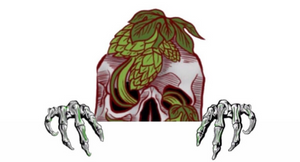Intro

Over the last 10 years or so, the craft beer scene has been flowing with beers trying to emulate dessert and pastries, and it was sort of inevitable that the day would come, where brewers would snap their fingers, and start to cram copious amounts of unfermented fruit and other non-traditional ingredients into certain beer styles.
So what’s the inevitable snap are you talk about Hopskull? Well Smoothie Sours! The newer kid on the block, as they are a relatively new phenomenon, which is quite innovative, fun and thirst quenching!
The style has hit the craft beer scene over the last couple of years, and they tend to be rather popular. Haling from IPA’s more specific Milk Shake IPA’s, before brewers settled on the better “beer-canvas” in the form of kettle soured beers – most often choosing beer-styles like Berliner Weiße or Gose, as the go-to base for Smoothie style beers.
So what’s a Smoothie Sours you might ask? Well, there isn’t any official style guidelines set, but essential they are a hyper-fruited sour ale, showcasing thick mouth coating fruit galore, sometimes different non-traditional adjuncts and ingredients like herbs, spices, bake goods, candy, lactose and – well, the list goes on and on, as there aren’t anything stopping brewers to put whatever they want into them.
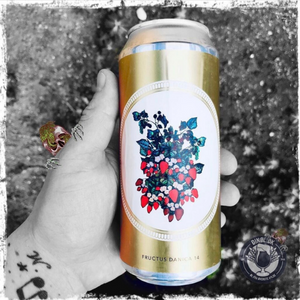
Smoothie Sours tend to be what might be argued as unbalanced, not showcasing any trades stemming from their base-beer. Smoothie Sours also often sparks arguments and they are quite debatable – are they even beer, with such immense fruit levels and no care for highlight elements of the base-beer?
Some might even make an argument, that smoothie sours shares more similarities with let’s say Beer cocktails / mixers like Shandy/Radler, (Lemonade + Beer) Diesel (Cola+Beer) Fanshop (Fanta+beer) and the list goes on, there are so many different beer-cocktail/mixer recipes available.
For me, when we talk about craft beer it’s a showcase of the crafter beer brewers imagination, playfulness and skill – he/she determines what the beer recipe should look like, and also has to stand his or her ground when they package it, and ship it out to consumers.
But a fair question to ask is “how large a percent of fruit, before it’s not beer anymore?” well for me, I kind of think that the majority should always be beer, and If I stretch it a bit – I could also justify a 50/50 mix or beer, and fruit, but not higher than that. The majority should always be beer, and I don’t necessary think that you have to taste the element of beer – as long as a brewer came up with it, brewed and packaged it, well it’s totally fine for me.
Even though smoothie Sours aren’t an official style yet, I would strongly emphasize that as long as the whole process behind the outcome was done by brewers, and they made use of traditional brewing techniques and ingredients such as using malt, water, yeast, hops and do the whole mashing, souring, fermenting, conditioning and adding additions before packaging – well then smoothie sours ain’t Reinheitsgebot, but it’s beer.
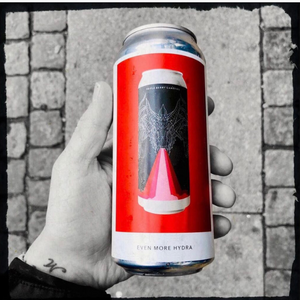
As I mentioned earlier, there aren’t any official guidelines at the moment, and given that Smoothie Sours have only been part of the craft beer scene for a couple of years, I think that it will take at least a few more years for something like the BJCP to catch up, and induct the Smoothie style into their official guidelines – before anyone says “But Hopskull, the BJCP already has guidelines on Fruit and specialty fruit beer styles, so what’s up with your claim?” Well true, BUT BJCP really emphasizes that both the fruit, and adjunct must never over-shine the element of beer, and that it’s always the malt, yeast and hops which shall be the center of attention, in any given style – lastly, all beers shall have balance between ingredients, and have to present the base-beer and only use e.g. fruits and adjuncts as a support.
But if the BJCP has this view on balance in beer, what’s balance in a smoothie Sours all about then? And what could a potential style guide look like? Well, I really want to dig deep, and bring you my idea of a Smoothie Sour Style guide!
Before I draw any conclusions and present my take on the guide – I want to start out by dissecting the base-styles for the smoothie beer, how you incorporate fruit and adjunct into the beer, turning that brew into a silky delicious smoothie like experience – Oh! Lastly, I want to share how you brew a smoothie Sours before I conclude on how I would write a style guide for the “smooshie’st” style of beers.
Great let’s go!
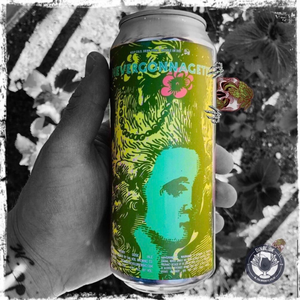
The base beer for the Smoothie
The main way to produce a base-beer for smoothie Sours is to go with the “Kettle Sour” technique – and the stars of kettle sours are Berliner Weiße and Gose – both styles have unique features, but don’t have or contain things, which might disturb the fruit and adjuncts in the Smoothie outcome, like hops might if the chosen smoothie base was to be an IPA! Here is a quick run though!
Kettle Sour
The kettle-sour method is quite simple! Brewers follow a traditional mash schedule then transfer the unfermented wort to the boil kettle, then pitch Lactobacillus into the wort and let it sit (the time in the kettle varies depending on the level of intended PH, from a few hours to a few days – when making smoothie sours, you have to hit a sweet spot with your PH, as fruit acid also joins the party later down the line).
When the wanted level of acidity is reached, the brewers then boil to kill off the Lactobacillus, and ferment with brewers yeast, – voila! Kettle soured beer. There are two ways to go beer-style wise when using this technique.
Berliner Weiße
Berliner Weiße is variety of sour wheat beer. The style originated in Germany and was once hugely popular and towards 2010 they slow and steady rose to popularity once again. The style probably dates to the 16th or 17th century and was so renowned that Napoleons troop supposedly called it the “Champagne of the North.”
The Berliner Weiße is very low in alcohol – around 3 or 4 % ABV. The beer is mildly tart, clean, fruity characteristics and a dry finish. Traditional a Berliner Weiße is accompanied by fruit syrup when served – The sirup is traditionally either “red “ raspberry or “green” woodruff. The syrup adds both sweetness and additional complexity.
Traditionally the Lactic acid sour profile was primarily archived by adding Lactobacillus, either in the fermentation vessel or by bottle conditioning.
Legends have it, that brewers traditionally buried the bottles in warm earth for several months thereby creating the best environment for the acidification and conditioning.
Gose
Gose pronounced “Go-zuh,” is a very traditional German beer style, that’s in fact many centuries older than e.g. German Pilsner or Kölsch. The history of the Gose beer style traces back to late 15 th century, and The town of Goslar, in Eastern Germany, where historians believed the beer got its name from. Another theory is, that the name Gose is really derived from the Gose River, which has been providing the Goslar villagers with fresh brewing water.
Once a very popular beer style, which unfortunately meets a decline during World War I, and by the end of World War II, Döllnitz brewery, the remaining Gose brewery at that time was finally closed. Luckily the beer style has once again risen, and is being brewed by a lot of different breweries across the globe.
Traditional Gose was spontaneously fermented, however most brewers now brew Gose by using the kettle-sour technique, similar to Berliner Weiße
The Gose beer is a cloudy yellow, top fermented unfiltered wheat beer, that’s flavored with coriander and salt. It’s crisp with a low IBU and a has a subtle dryness.

How to add the smoosh smoosh aka the fruit and adjuncts
With the base-beer style walkthrough done, it’s time to talk about – how the fruit gets incorporated into the base-beer style of choice.
There are plenty of ways and techniques to add fruit, but the best and most common way when creating smoothie style beer is fruit puree. There are two ways to go, when talking purée – there is fresh, and aseptic.
Fresh puree
Fresh fruit puree has the benefit of being quit easy for any liquid to extract the fruit flavor fast. Purée also sinks to the bottom of the fermenter, so the problem of floating whole fruit is avoided. Floating pieces of fruit has the sad habit of provoking mold development, and also breaks the surface of the beer. The only thing with fresh fruit is that it can contain harmful things for you beer, like bacteria and wild yeast. Some brewers choose to heat pasteurize freshly made puree, but there is an easier way to go.
Aseptic puree
This is pretty much the same as fresh puree, but this has already been pasteurized. Luckily aseptic puree isn’t hard to get hold off, as it’s pretty commercially available. In America the most common source is Oregon Fruit, in EU we have ”Les Vergers Boiron”
Adding The Fruit
When adding fruit to a kettle soured beer, it’s all about time – kettle sours ferment, and mature way faster than let’s say a mixed fermentation beer, so you can add fruit much sooner. In other words, when the kettle sour is done fermenting after about two weeks, fruit can be added at that time, and you’re good to go. Sometimes the base-beer can undergo some conditioning time on adjuncts before the fruit additions.
Adjuncts
When talking smoothie sours, you cant only talk about fruit integration, as they often contain quit the plethora of ingredients and adjuncts. A star amongst ingredients in smoothie sours, besides the fruit additions is lactose, which contributes with sweetening and adding mouth feel – normal brewers yeast can’t ferment it.
Other common stars are marshmallows, vanilla, cinnamon, coconut and crackers – seriously, the list is endless, and so are the limitations, the brewers have an never-ending list of ingredients at their disposal.
What matters is, that all these additions act as supporting element, which adds depth for the fruit additions – also, the brewers love to play around, and try to aim for different baked goods and pastries.
Brewers normally condition the finished beer, in a secondary container when it’s done fermenting out in the primary. It’s in the secondary container, where additions of different adjunct normally come into play. The base-beer is allowed to interact with the adjuncts, picking up flavor that will carry over into the finished beer without interference from the large amount of fruit.
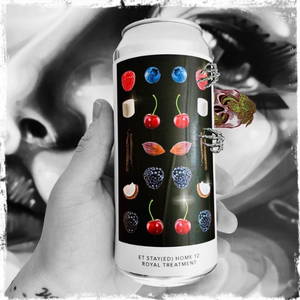
Balance is key
As I said earlier, the BJCP emphasizes that balanced is when the elements of the base-beer are the center of attention – you know, the malt, yeast and hops. When the BJCP talks adjuncts, these additions must never over-shine the element of the base-beer. I really think the breaking point for all the people screaming loudly that these smoothie sours are not beers and shouldn’t be called so, is simply because the balance favors the fruit and adjuncts, and not the beer.
If you ask me, the balance in smoothie sours is all about letting the fruit and adjuncts dominate together, rather than having them in the background as a support for the base-beer – the base-beer is the canvas, the fruit and adjuncts are the brush which paints the painting.
When talking balance and smoothie sours, each fruit needs to integrate, and go along with each other fruit addition seemingly, the same goes for adjuncts.
A good example is, too much citrus and you drive the acidity through the roof and overtake the beer, too much spice and you can create a drain pour worthy concoction.
Brewers take great pride in calculating balance between fruits and adjuncts, to purposely create a beer which most beer drinkers would properly label as unbalanced and way too over the top.
How To Make A Smoothie Sour Beer
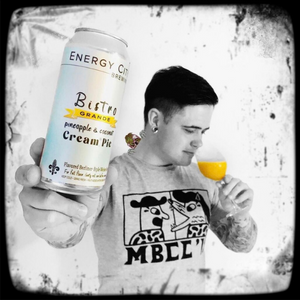 Okay guys, I think we are ready to talk about, how these lovely hyper-fruited sours are made!
Okay guys, I think we are ready to talk about, how these lovely hyper-fruited sours are made!
First off, brewers settle on a base-beer style – Personally, I would always go with Gose, as the salinity and the coriander seeds are pretty handy when it comes to “bind” the beer together and enhance flavor. The goal is to create a base-beer that has a lot of body to stand up to the acid from the souring and fruit, as well as provide a great base for any other additions that we may be adding later in maturation.
As the fruit purée dilution element is going to act a pretty significant role, the base-beer has to be around 8-10 % ABV, so aim for an imperial Kettle Sour which means a good notch above 7 % ABV, so it will settle around 4-5 % ABV after dilution with fruit purée.
When brewing the beer, it’s pretty straight forward – after mashing, the wort is soured with lactobacillus, to a point between 3,5 and 3,4 PH, then boiled to kill of any remaining souring bacteria.
The boil last for about an hour, if wished, lactose and also marshmallows can be added at this point, and at the end of the boil include hops, coriander and salt in the kettle – IBU target is only about a level between 10-15 IBU, as it’s only the preservative in the hops you want.
When cooled down, yeast is introduced – and make sure it’s yeast, which can tolerate higher levels of alcohol. After primary fermentation is done, the beer is racked over to another vessel, which acts as an conditioning tank – and it’s time for additions of adjuncts like for example coconut, crackers, vanilla pods and so on!
The time spent in secondary is about a week, before transferred to conditioning tanks. Now, the time has come! It’s time to undergo dilution with unfermented fruit puree – The target percent of beer to purée ratio should be around 40 % fruit, 60 % beer.
When dilution ratios have been met, it’s time to force carbonate (Pretty much means, that you force CO2 into the beer), and because the beer is so thick and smoothie like, the force carb is all done by feel, as the beer is so thick that you cant get an accurate CO2 reading using CO2 Volume Meter.
And now, it’s time to package, ship and consumption – Done!
Hopskull’s Style Guide: Smoothie Sour
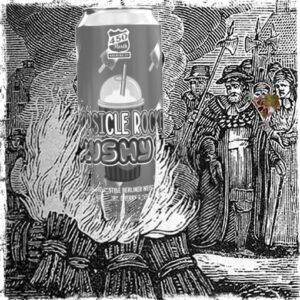
Remember that this is 100 % my own thoughts, and you might not agree – if so; let’s debate about it! Even though I really emphasize, that smoothie sours are beers, I have a feeling that some of you might still call this heresy, and demand that these smoothie-spawn of Satan should be burned like the witches at Salem. Well, I don’t care – They are beers! Let’s go, my Smoothie Sour Style Guide.
Overall Impression
A harmonious marriage of fruit, adjuncts, and base-beer, which doesn’t have to be recognizable as a beer. The fruit, and adjunct characteristics shall be evident, but in balance, so the combined elements go seemingly together, also the base-beer shall simple act as an element for the fruit and adjuncts to unfold on.
Aroma
The distinctive aromatics associated with the declared fruit and adjuncts, shall be noticeable in the aroma; however, take note that some fruit like raspberries and cherries have stronger aromas and are more distinctive than others. The range of fruit characteristics may range in intensity from subtle to aggressive, but must be distinguishable from adjuncts and base-beer. The additional aromatics such as spice, candy, and baking goods may blend well with whatever aromatics are appropriate for the declared fruit and base-beer. But take note, that it isn’t a fault if the base-beer isn’t pronounced.
Appearance
Appearance should be appropriate to the color scheme for the declared fruit.
Flavor
As with aroma, the distinctive flavor character associated with the declared fruit and adjuncts shall be noticeable, and may range in intensity from subtle to aggressive.
The balance of fruit acidity with the underlying PH of the base-beer is vital.
Remember that fruit generally adds flavor and sweetness to fruit beers. The sugar found in the additions of fruit purée often aren’t fully fermented and contributes to a sweeter finish than might be expected for the declared base style. Remember that residual sweetness is not necessarily a negative characteristic.
Some additional adjuncts can add a flavor component. Whatever additional flavor component is present should be in balance with the fruit, and be a pleasant combination.
Mouthfeel
Mouthfeel may vary depending on the fruit purée levels – but most often, the mouth feel will range from medium to full/thick – The goal is a dilution point of 40 % fruit purée and 60 % base-beer. Unfermentable sugars such as lactose will increase the body. Unfermentable fruits may add a bit of astringency. Carbonation levels should be appropriate to the declared base beer style.
Comments about the style
Overall balance is the key when presenting a well-made Smoothie Sour. The key for Smoothie sours is that, each element of fruit and adjuncts needs to integrate, and go along with each other seemingly. Every declared fruit and adjunct has to be recognizable. Do not expect to taste the base-beer, as it simply acts as a blank canvas for the fruit and adjunct additions to unfold upon.
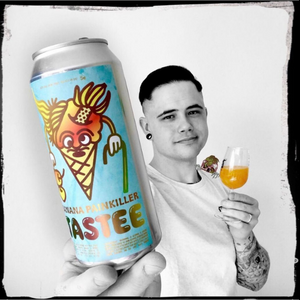
Conclusion
It may be hard to imagine that smoothie beers are one of the hottest things on the crafter beer scene, as they really tickle and provoke by altering the perception of what is beer?
I gotta say, and I stand my ground Smoothie sours are beers, or at least as long as the dilution percentage of beer vs. fruit doesn’t go higher then 50/50” – and they are brewed by a brew-master.
Smoothie beers are here to stay and even though they are weird, they are absolutely wonderful! The amount of creativity that can go into them is almost never ending, and I get why brewers play around with them, and have are having tons of fun in the process – beer should always be fun and exiting – Rules which should always shine throughout your life, because when things start to become dull and you stop caring, well move on – you only live once.
I hope you learn a thing or two, and that I got around all the important things – this was perhaps the most lengthy blog entry I’ve ever done! Hope it will help you on your smoothie craft beer journey!
Psst little tip!! when you pick up some smoothie sours, remember keep cold, drink fresh and be careful if you get smoothie beers shipped during summer – highly explosive stuff – I’m serious, they can explode if storage to hot!! And lastly, remember to always shake and roll your cans before opening, you want it fully mixed around before pouring.
Before ending, here is a really appropriate quote from John Dewey!
“To be playful and serious at the same time is possible, and it, defines the ideal mental condition” – in other words, no play, no life!
Well, that’s all folks, go get some smoosh smoosh!
Yours truly
Advertisement link – DINØL.DK
Wanna try some smoothie sours? Dinøl.dk has a wide range, supporting Mortalis, Omnipollo, Evil Twin and more – Use the code “Hopskullgiver10 ” and get a 10 % discount on all Smoothie Sours – Ends may 31st 2021
Smoothie Breweries you should seek out and try!
Energy City – Purchasable here
Evil Twin NYC – Purchasable here and here
